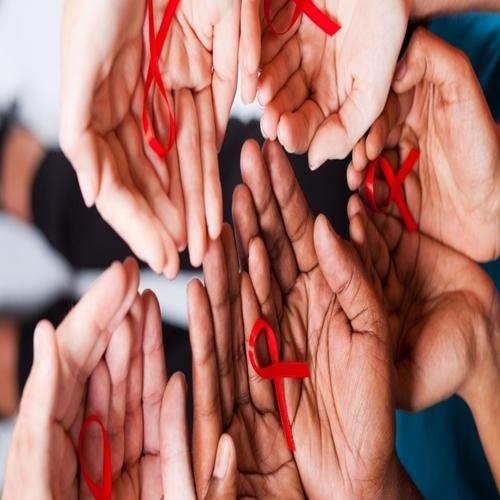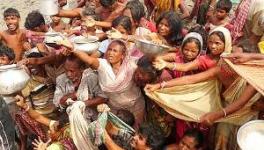HIV/AIDS Movement in the Country: A Story of Negotiations With the Week Public Health Structures

In India, new HIV infections dropped from 1,20,000 in 2010 to 88,000 in 2017. AIDS-related deaths also dropped from 1,60,000 to 69,000, and people living with HIV from 23,00,000 to 21,00,000 in the same time period, noted the UNAIDS report 2018. It surely is good news for the prevention programs and interventions functioning in the country, but they still have a long way to go. The UNAIDS report also noted that this downfall in the deaths and an improvement in the attitudes towards people living with HIV in India, just like in Vietnam, is due to proper implementation of the program. The credit for this goes to the HIV/AIDS movement in the country.
The first HIV positive case in India was reported in Chennai in 1986, and it was found that Maharashtra, Tamil Nadu, and Manipur had the majority of AIDS cases in the country. By the end of 1999, 1.3 million women were living in India with HIV, and by 2002, 3.7 million adults and children were living with HIV in the country. The Indian government set up screening centers to diagnose the disease which was said to be dangerous enough to wipe away humanity. The government set up the National AIDS Control Program (NACP) in 1987, aiming to stop HIV from spreading. The second phase of the program was launched in 1999, aimed at providing antiretroviral treatment. The third phase, which was launched in 2007, focused on high-risk groups and control outreach programs.
Dr. Amit Sengupta of People’s Health Movement, speaking to Newsclick, noted that India responded to HIV/AIDS quite late. Though by 2000 the country was a major producer of the drugs, the infected in the country could not access them. Dr. Sengupta was referring to the fact that when the NACP (I) was initially launched, the drugs were always out of stock. A movement of the HIV/AIDS infected people emerged and built a pressure and ensured that the prices of the drugs come down and are more accessible.
Also Read: UN AIDS Report 2018: Death Rates Have Gone Down but Discrimination Remains
The HIV/AIDS networks have always been instrumental in changing the attitudes of the state towards HIV/AIDS. They have been struggling to make the management of the disease a priority. For example, The Delhi Network of Positive People, active in Delhi, wrote a letter to the Prime Minister Narendra Modi, Finance Minister Arun Jaitley and Health Minister J P Nadda, informing them about the stock outs of medicines in the country. The letter was signed by 600+ HIV community members, including children living with HIV. The network drew the attention of the government to the stock out of an essential HIV medicine – lopinavir/ritonavir for infants and young children. This, the network noted, is because the sole company manufacturing the “life-saving formulation” is not participating in the bids that NACO invites. They also said that “the pharmaceutical company Cipla has in various forums cited delay in payments by the national program for the HIV medicines by several years and even non-payment of its dues in many cases.” This letter shows that even though the death rates have come down and the count of people living with infection is declining, the HIV/AIDS program needs a better management.
The HIV/AIDS movement struggles to ensure that the medicines are available for everyone, and they do it by keeping every authority in the government related to HIV/AIDS program in the loop. In the times of stock outs or any other crisis, the networks write emails to the HIV/AIDS program in charges, state ministries and the Health ministry. In most of the cases, as the emails are written by the patients themselves, copying in all the ministries and in charge persons, the emails create a pressure and yields answers.
Also Read: India: Health of the Nation’s States
Medicines going out of stock are a major concern for the people living with HIV/AIDS, but it is not the only concern of the movement. The movement has been opposing the patenting of medicines in India. The medicines that an infected person requires on everyday basis become inaccessible due to the competition for monopoly that the manufacturers focus on. For example, in 2016, the movement took on ViiV Healthcare (a joint venture by Pfizer and GlaxoSmithKline) for its attempt to obtain patent on Dolutegravir and Cabotegravir drugs. These drugs, which reduce the virus levels faster, are not easily available in the country, as ViiV Healthcare prohibits their private selling; the NGOs and the Public Sectors are provided with it only after obtaining the company’s permission. The movement argued that patenting these drugs are invitations for monopolization of the drug market in the country, making them even more inaccessible. These networks and the movement in general have taken on the patents for the Hepatitis C drugs as well. The movement has a rights-based approach to managing the infection and the disease.
The major concern in the country in the HIV/AIDS prevention programs has been funding. Avahan: The India AIDS Initiative was a HIV/AIDS prevention program of Bill and Melinda Gates Foundation. The program, launched in 2003, had announced 67.5 million dollars for five years and a total of 200 million dollars in the long run. The Gates foundation had funded various strategies that had to be carried on by various organisations, and this did not mean that the government was freed from its duties towards health and welfare of the population. The foundation, however, has retracted the funds on HIV/AIDS since 2013. Now, the government has to generate funds and allocations in its budget towards the prevention programs.
The government, in its annual budget for the fiscal year 2018-2019, has allocated a mere sum of Rs 52,800 crore for healthcare, and it is only 5 per cent higher than what was allocated for 2017-2018. The investment in public health of the government is hardly enough, and invites the private players to invest in public health. The stock out problem that the HIV/AIDS drugs face, for example, is due to the lack of investment by the government in public health. Public health system is the only way to ensure that the medicines are more accessible. J. P. Nadda, the health minister, had promised a “test and treat” policy, where all individuals who have been tested positive for HIV infection will receive antiretroviral drugs in India. This, however, as the civil society argues, has remained merely a verbal commitment.
In 2017, the Lok Sabha passed the Human Immunodeficiency Virus and Acquired Immune Deficiency Syndrome (Prevention and Control) Bill, 2017. The bill, that was passed by the Rajya Sabha on March 22, 2017, makes antiretroviral therapy a legal right of HIV/AIDS patient and states that “every person in the care and custody of the state shall have right to HIV prevention, testing, treatment and counselling services.” The bill also prohibits HIV testing being used as a pre-requisite for securing a job, accessing health care, or education, and states that no person shall have to undergo HIV test or medical treatment without one’s informed consent. An HIV positive person shall have to disclose his HIV status only if required by a court order.
The bill, as a whole, does introduce a right based approach that the movement in the country has adopted. However the bill reflects the government’s reluctance to spend its money on public health in the Section 14 (1) of the bill. The section states, “The measures to be taken by the central or state governments under section 13 shall include measures for providing, as far as possible, antiretroviral therapy and opportunistic management to people living with HIV or AIDS.” “As far as possible” in this section defeats the whole purpose of the bill and has been opposed by the community.
Get the latest reports & analysis with people's perspective on Protests, movements & deep analytical videos, discussions of the current affairs in your Telegram app. Subscribe to NewsClick's Telegram channel & get Real-Time updates on stories, as they get published on our website.























